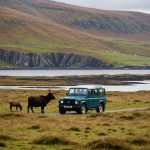Campfire cooking is a quintessential part of the camping experience, especially in the UK’s scenic national parks. The crackling fire, the aroma of food, and the camaraderie built around the flames create unforgettable memories. However, cooking over an open fire requires adhering to specific guidelines to ensure safety and preservation of the environment. This article delves into best practices for campfire cooking while ensuring you leave no trace and respect the wild landscapes of the UK’s national parks.
Understanding the Outdoor Access Code
Before you head out for your camping trip, familiarize yourself with the Scottish Outdoor Access Code. This code provides guidelines on how to responsibly enjoy the outdoors while minimizing your impact on the environment. The access code emphasizes respect for the countryside, consideration for other people, and care for your surroundings.
A voir aussi : How to plan a cycling and camping tour across the Cotswolds?
Respect the Environment
When camping in places like the Cairngorms National Park, it’s crucial to respect the natural habitat. Avoid making new fire pits; use existing ones if available. Not only does this reduce environmental impact, but it also helps prevent high fire risks, especially during dry seasons.
Plan Ahead
Proper planning is essential for a successful camping trip. Ensure you have a detailed camping itinerary, including designated campfire sites, and check the national park’s regulations. Some parks may have specific rules about open fires, so verify whether campfires are permitted.
A lire également : What are the steps to take if you get lost while camping in the Lake District?
Minimize Waste
Pack out all your rubbish and food scraps to ensure you leave no trace. Use biodegradable soap if you need to wash dishes, and avoid contaminating water sources. By following these steps, you maintain the beauty and health of the wild areas you visit.
Building and Managing a Campfire
Knowing how to safely build and manage a campfire is fundamental to campfire cooking. Proper fire management reduces the risk of wildfires and protects the surrounding environment.
Choosing a Spot
Select a safe location for your campfire. A fire pit is the best option; if none is available, consider building a temporary one on a mound of sand or soil. Stay clear of dry areas prone to catching fire and keep your campfire at least 10 feet away from tents and flammable materials.
Gathering Materials
Gather three types of materials: tinder, kindling, and fuelwood. Tinder consists of small twigs, dry leaves, or paper. Kindling includes slightly larger sticks, while fuelwood comprises larger logs that sustain the fire. Avoid using wood from the park as it may harm the ecosystem; bring your own or buy locally.
Lighting the Fire
Light your campfire using a match or lighter. Start with the tinder and gradually add kindling and fuelwood, ensuring the fire remains small and manageable. Never leave a fire unattended and always have water or a shovel nearby to extinguish it if necessary.
Campfire Cooking Techniques
Cooking over an open fire offers a unique flavor to your meals, but it requires some skill and patience. With the right techniques, you can prepare delicious food while enjoying the great outdoors.
Using a Grill or Grate
A portable grill or grate can make campfire cooking easier and more efficient. Place the grill over the fire and use it to cook meats, vegetables, and other foods evenly. Remember to adjust the height of the grill to control the cooking temperature.
Foil Pack Meals
Foil pack meals are a convenient option for campfire cooking. Wrap your ingredients in aluminum foil, ensuring the packets are sealed tightly. Place the foil packs on hot coals and cook for the recommended time. This method is perfect for camping as it minimizes cleanup and reduces the risk of burning food.
Using Dutch Ovens
Dutch ovens are versatile and excellent for campfire cooking. You can use them to bake bread, simmer stews, or even roast meat. Place the Dutch oven over hot coals and cover it with additional coals for even heat distribution. With a little practice, you’ll be able to create hearty, satisfying meals in the wild.
Ensuring Safety and Hygiene
Safety and hygiene are paramount when cooking in the outdoors. By taking the necessary precautions, you can prevent accidents and ensure your food is safe to eat.
Safe Food Handling
Store perishable food in a cooler with plenty of ice to keep it at safe temperatures. Use separate cutting boards and utensils for raw meat and other foods to avoid cross-contamination. Wash your hands frequently with biodegradable soap and clean water.
Fire Safety
Always supervise your campfire and keep a bucket of water or a fire extinguisher nearby. Before leaving your camp, ensure the fire is completely extinguished. Pour water over the embers and stir until no hot spots remain. This step is crucial to prevent wildfires and respect leave no trace principles.
Leave No Trace Principles
Following the Leave No Trace principles is essential for preserving the beauty and integrity of national parks. These guidelines help minimize human impact on natural areas, ensuring they remain pristine for future generations.
Plan Ahead and Prepare
Research the camping regulations and access restrictions of the national park you plan to visit. By planning ahead, you can avoid unnecessary damage to the environment and have a more enjoyable camping experience.
Dispose of Waste Properly
Pack out all trash, leftover food, and litter. Disposing of waste properly is a fundamental aspect of the leave no trace ethic. Use designated waste disposal areas and recycle whenever possible.
Respect Wildlife
Observe wildlife from a distance and never feed animals. Feeding wildlife disrupts their natural behaviors and can lead to dangerous situations. Store food securely to prevent attracting animals to your camp.
Be Considerate of Other Visitors
Respect other campers and visitors by maintaining a low noise level and allowing everyone to enjoy the outdoors. Follow designated trails and campsites to minimize environmental impact.
Cooking over a campfire in the UK’s national parks is a rewarding experience that connects you with nature. By adhering to the Scottish Outdoor Access Code, practicing safe fire management, and following leave no trace principles, you ensure a responsible and enjoyable camping trip. Whether you’re in the Cairngorms National Park or another beautiful location, the best practices for campfire cooking help protect our natural heritage and enhance your camping adventure.
From choosing the right spot for your campfire to mastering campfire cooking techniques, these guidelines are designed to make your camping experience safer, more enjoyable, and environmentally friendly. So, gather your gear, plan ahead, and embrace the joy of campfire cooking in the UK’s stunning national parks.





